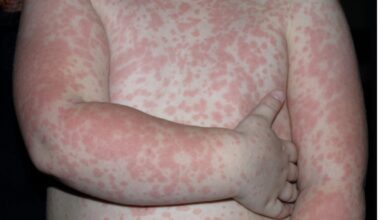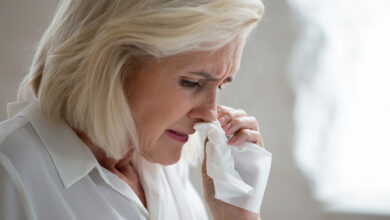CAN YOU GET COVID-19 FROM TOUCHING SURFACES?

In March of 2020, when the COVID-19 pandemic first seized the attention of the American public, the answer to that question was “yes.” The thought, with a great degree of conviction, was that COVID-19 lived on the surface of plastic or stainless steel for days! It was so hardy, to protect yourself you needed to wear either impenetrable gloves or decontaminate everything with which you came in contact. We were sternly warned to disinfect our groceries, and anything someone else had touched. This led to “no-touch delivery” policies, that in some places are still in effect.
Americans were scared to death of this virus because if it lived on a surface for up to a week, how would you ever know when or where you got it. My goodness, you could get it anywhere, and unknowingly bring it home to your family. And, we all know how devastating it would be if you got COVID! We all hunkered down, stayed home, didn’t go to church, work, or school, and became anxious if a stranger got closer to us than six feet! As an earlier blog stated, the demand for hand-sanitizer went crazy and exceeded the supply resulting in a shortage of the item we thought might actually help to save our lives!
Scientists use the term Fomite to identify an object on which a virus or bacterium might live. This inanimate, non-viable object is said to permit these organisms to live on their surface for as long as six days, all the while infecting anyone who touches it. Fomite is not a word people use in normal conversation, but anything can be a Fomite!
In the early months of the COVID-19 pandemic, at least six studies were conducted that showed the virus can live on a Fomite for as long as 6 days or as briefly as 1hour. It was later determined that the results obtained in these studies were due to the concentration of virus “inoculated” into these surfaces being much higher than would ever be seen in real-life situations. These surfaces had virus that lived up to 6 days because there was a much larger amount of virus in the test area than would normally be expected, and thus the virus lived off itself. In real-life situations, COVID-19 exists in a living host and is spread into the atmosphere in the spray produced by a cough, sneeze, or a runny nose. The actual amount of virus a host could deposit on a Fomite (surface) was far less than the amount used in the studies for determining the length of time it could live on a surface.
We now know conclusively that “the majority of transmissions occur as a result of infected people spewing out large droplets and small particles called aerosols when they cough, talk, or breathe. These aerosolized droplets are then inhaled by people close by. Surface transmission, although possible, is NOT thought to be a significant risk.” This information was not reported to the public early on in the pandemic. Aerosol/droplet spread is the major mode of transmission.
A New Jersey microbiology, biochemistry, and medical genetics professor wrote “The chances are less than 1 in 10,000 of getting COVID from a Fomite. Only “in instances where an infected person coughs or sneezes on the surface, and someone else touches that surface soon after the cough or sneeze (within 1-2 hours)”…[would COVID-19 be transmitted]. The virus is fragile. It dies very quickly outside the human host…virtually no infectious virus has been found on Fomites over the last two years…” This includes public bathrooms, washrooms, planes, trains, ships, and buses.
The most important thing people can do to eliminate Fomite transmission is careful, diligent, meticulous hand washing. “Drying your hands after with single-use disposable paper towels is the preferred method of hand drying in terms of hand hygiene.” “If hand washing and drying is effective in the first place, it’s unlikely that the bathroom air or surfaces will pose an infectious disease transmission risk.”
People-to-people, not surface-to-people, spread is the “greatest threat” for transmission of COVID-19. Hand washing is far easier and faster than disinfecting an entire surface of something because where do you start? How much of the surface should be cleaned? It is better to improve air movement and ventilation than disinfecting vanity surfaces ten times a day.
Dr. G’s Opinion: When COVID-19 first appeared, we knew nothing about it. We were all fearful because it was portrayed as a deadly virus that should be avoided at all cost. And we all did our best to avoid it—masks, quarantines, social distancing, staying home from work, school, and church, and later two vaccine shots and a booster. Like anything else, the longer it’s in the public view, the more you learn about it. With increasing comfort and knowledge about transmission, we became less careful about protecting ourselves. We became complacent and less vigilant.
The articles I referenced here strongly emphasized good hand hygeine. It was that practice, plus improving ventilation and controlling droplet spread, that greatly impacted transmission of COVID-19 from person-to-person. Fomite transmission has ceased to be a major concern…..as long as good hand-washing technique is practiced by anyone at high risk. BUT proper hand hygeine is a good idea for preventing the transmission of infectious diseases of any sort. Its importance should never be forgotten, nor should we cut corners when doing it.
References: Goldman E. Exaggerated risk of transmission of COVID-19 by fomites. Lancet Infect Dis 2020 Aug;20(8):892-893.
Https://www.mdedge.com/infectious disease/article/248895





This up date is timely. Thank you. It was a good reminder of what we should be doing repeatedly.
Thanks